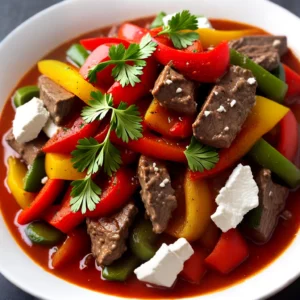Are you curious about how many calories are in a gram of carbs? Understanding the caloric content of carbohydrates is essential for managing your diet and maintaining a healthy lifestyle.
In this comprehensive measurement conversion guide, I will explore the caloric content of carbohydrates and provide useful information for portion control and understanding the energy value of carbs.
- A gram of carbohydrate contains approximately 4 calories.
- Carbohydrates are the main source of energy in the human diet and can be found in sugars, starches, and fiber.
- Fats have the highest caloric value, with 9 calories per gram, while protein also contains approximately 4 calories per gram.
- A calorie (cal) and kilocalorie (kcal) are not the same, but they are often used interchangeably in nutrition.
- Converting grams to calories for different macronutrients can help you understand the energy value of your food choices.
Carbohydrates as the Main Source of Energy
Carbohydrates play a vital role in providing energy to our bodies and are considered the main source of fuel for various bodily functions. They can be found in different forms, including sugars, starches, and fiber. When we consume carbohydrates, our bodies break them down into glucose, which is then used by our cells as a primary source of energy.
Unlike fats and proteins, carbohydrates are efficiently converted into energy by our bodies. This is because carbohydrates are readily available and can be quickly converted into glucose, which can be used immediately or stored for later use. In fact, our brain and nervous system rely heavily on glucose for optimal functioning.
It’s important to note that not all carbohydrates are created equal when it comes to energy. Simple carbohydrates, such as those found in sugary foods and beverages, are quickly digested and absorbed, leading to a rapid increase in energy levels. On the other hand, complex carbohydrates, such as those found in whole grains, legumes, and vegetables, provide a slower and more sustained release of energy. This makes complex carbohydrates a preferred choice for maintaining steady energy levels throughout the day.

In comparison to fats, carbohydrates provide 4 calories per gram, while fats provide 9 calories per gram, making fats the most energy-dense macronutrient. Protein, like carbohydrates, also provides 4 calories per gram. While protein is not primarily used for energy production, it serves as a major functional and structural component of animal cells.
Carbohydrate Energy Value:
| Macronutrient | Calories per Gram |
|---|---|
| Carbohydrates | 4 |
| Fats | 9 |
| Protein | 4 |
To put this into perspective, let’s consider a practical example. If you were to consume 50 grams of carbohydrates, this would provide you with approximately 200 calories (50 grams x 4 calories/gram = 200 calories). Similarly, 50 grams of protein or 50 grams of fats would also provide you with 200 calories each.
Caloric Content of Carbohydrates
The caloric content of carbohydrates can vary depending on the type and form of carbs you consume. Carbohydrates are a vital source of energy in our diet, providing approximately 4 calories per gram. They are found in various forms, including sugars, starches, and fiber. Understanding the caloric value of carbohydrates is essential for managing your overall calorie intake and maintaining a healthy diet.
Focusing on the caloric content of carbohydrates can be particularly important if you are watching your calorie intake or trying to lose weight. By being mindful of the number of carbohydrate calories you consume, you can make informed choices about portion sizes and balance your macronutrient intake.
It’s worth noting that a gram of fat contains 9 calories, making it the most energy-dense macronutrient. On the other hand, protein also contains approximately 4 calories per gram. Each macronutrient serves a different role in our bodies, and understanding their caloric content can help you create a well-rounded diet plan.
Calculating calories from carbohydrates and other macronutrients can be a useful skill for meal planning. To further illustrate, here’s a practical example:
| Macronutrient | Grams | Calories per Gram | Total Calories |
|---|---|---|---|
| Carbohydrates | 30g | 4 | 120 |
| Protein | 15g | 4 | 60 |
| Fat | 10g | 9 | 90 |
| Total | – | – | 270 |
By calculating the calories from each macronutrient, you can get a better understanding of your overall calorie intake. This information can guide you in making balanced food choices and maintaining a healthy and well-rounded diet.
Understanding Carbohydrate Nutrition
Carbohydrates are an important macronutrient that provides energy and essential nutrients to support our overall health and well-being. They can be found in various forms, including sugars, starches, and fiber. When consumed, carbohydrates are broken down into glucose, which is the primary source of fuel for our cells, tissues, and organs.
Not all carbohydrates are created equal. Some carbohydrates, like refined sugars and white bread, provide quick bursts of energy but lack essential nutrients. On the other hand, complex carbohydrates, such as whole grains and fruits, are rich in fiber, vitamins, and minerals, offering sustained energy and numerous health benefits.
To incorporate carbohydrates into your diet, it’s important to focus on whole, unprocessed sources. This includes foods like vegetables, fruits, legumes, whole grains, and dairy products. These foods provide a balance of carbohydrates along with other essential nutrients, such as protein, healthy fats, and vitamins.
| Carbohydrates | Calories per gram |
|---|---|
| Sugar | 4 |
| Starches | 4 |
| Fiber | 2 |
Table: Caloric content of different types of carbohydrates.
It’s important to note that while carbohydrates are a crucial part of a healthy diet, portion control is key. Consuming excessive amounts of carbohydrates, especially those high in refined sugars and processed grains, can lead to weight gain and other health issues. Aim for a balanced diet that includes a variety of macronutrients, including carbohydrates, proteins, and fats, to support your overall well-being.
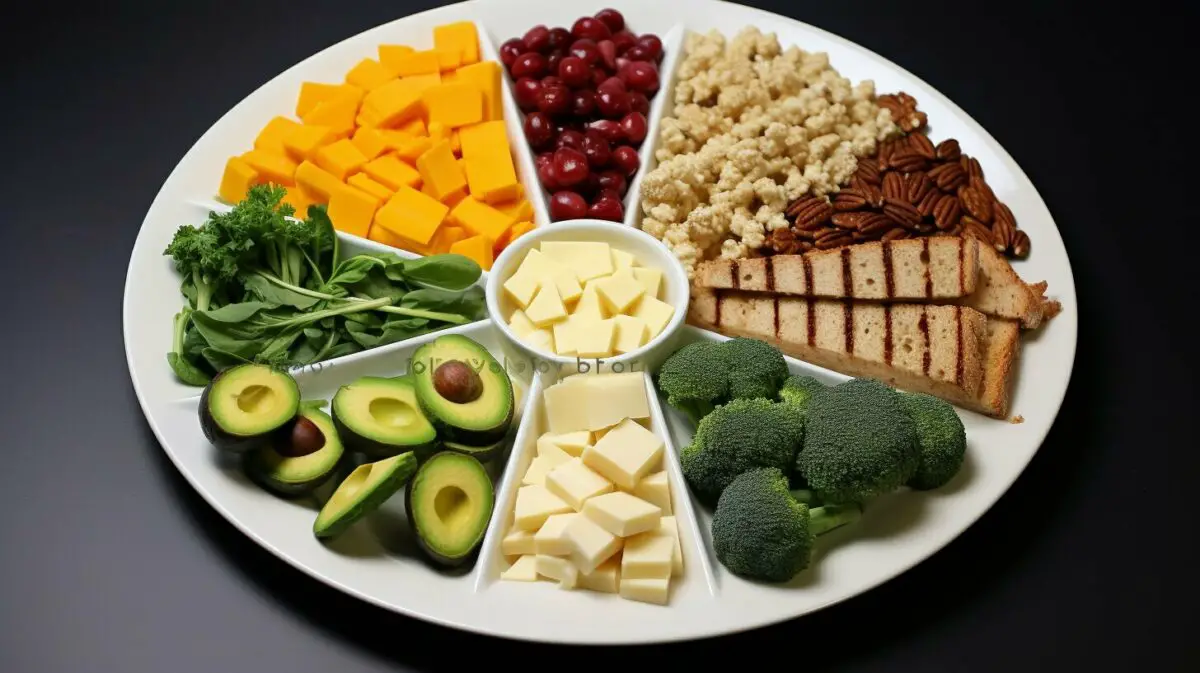
Managing your carbohydrate intake is crucial for maintaining a healthy weight, and understanding the calories per gram of carbs can help you make informed choices. Carbohydrates are the main source of energy in the human diet, providing fuel for our bodies’ daily activities. However, not all carbs are created equal, and their caloric content can vary depending on the type.
In general, a gram of carbohydrate contains approximately 4 calories, making it less energy-dense compared to fat, which contains 9 calories per gram. This means that you can consume a larger volume of carbs for the same amount of calories compared to fats. However, it’s important to keep in mind that portion control is still important, as excessive carb consumption can lead to weight gain.
To better manage your weight, it’s helpful to understand the concept of carb counting for calories. By keeping track of your carbohydrate intake, you can ensure that you’re not consuming more calories than your body needs. This can be particularly useful if you’re following a calorie-controlled diet or trying to lose weight. Monitoring your carb calories can also help you make healthier choices by opting for complex carbohydrates, such as whole grains, fruits, and vegetables, which provide additional nutrients and fiber.
| Macronutrient | Calories per Gram |
|---|---|
| Carbohydrates | 4 |
| Fat | 9 |
| Protein | 4 |
In summary, being mindful of your carb intake is essential for weight management. By understanding the calories per gram of carbs and practicing portion control, you can make healthier choices and maintain a balanced diet. Remember to prioritize complex carbohydrates and incorporate them into your meals and snacks for sustained energy and overall well-being.
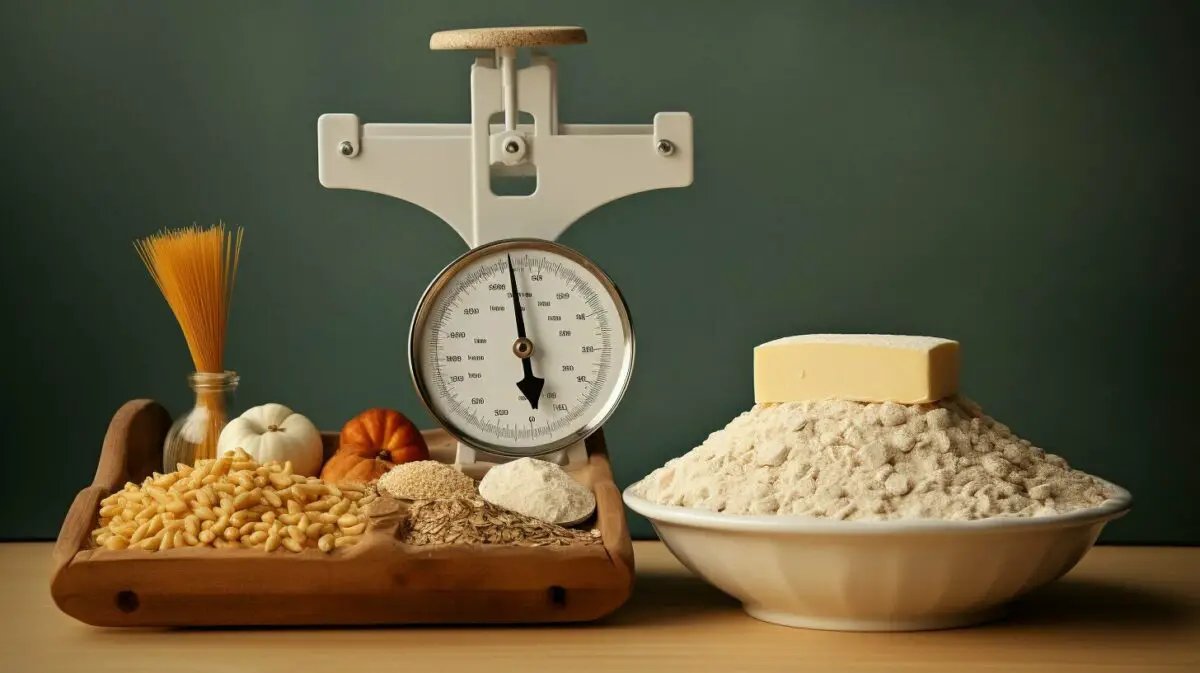
The caloric density of carbohydrates can vary, and understanding this concept is essential for controlling your overall calorie intake. Carbohydrates are a primary source of energy, providing approximately 4 calories per gram. This means that consuming foods rich in carbohydrates can contribute significantly to your daily caloric intake.
However, it’s important to note that not all carbohydrates have the same caloric density. For example, simple sugars, such as those found in candy or soda, are highly concentrated sources of calories. On the other hand, complex carbohydrates, like whole grains and vegetables, generally have a lower caloric density due to their higher fiber content.
To illustrate the caloric density of different carbohydrates, consider the following table:
| Carbohydrate Source | Calories per 100 grams |
|---|---|
| White bread | 265 |
| Brown rice | 111 |
| Broccoli | 34 |
| Banana | 96 |
As you can see from the table, the caloric density of carbohydrates can range significantly. Choosing lower-calorie options, such as vegetables and whole grains, can help you maintain a balanced diet and manage your overall calorie intake effectively.
Understanding the caloric density of carbohydrates is just one aspect of maintaining a healthy diet. It’s also crucial to consider the overall nutritional value of the foods you consume, including the presence of essential vitamins, minerals, and fiber. By making informed choices about your carbohydrate intake, you can support your overall health and well-being.
Carb Calories and Energy Expenditure
Carbohydrate calories are essential for fueling our bodies and supporting optimal energy expenditure throughout the day. When we consume carbohydrates, our bodies break them down into glucose, which is then used as the primary source of energy for our cells. This energy allows us to perform everyday tasks, such as walking, talking, and even thinking.
The metabolic rate, or the rate at which our bodies burn calories, is influenced by various factors, including our physical activity level and body composition. Carbohydrate intake plays a significant role in determining our metabolic rate. When we consume carbs, our bodies utilize the energy they provide to power our muscles and organ systems. This increases our metabolic rate, allowing us to burn more calories even at rest.
To optimize energy expenditure, it’s important to consider the quantity and quality of carbohydrates we consume. Choosing complex carbohydrates, such as whole grains, fruits, and vegetables, provides a steady release of energy and sustains our energy levels throughout the day. On the other hand, consuming simple carbohydrates, such as sugary drinks and processed snacks, can lead to energy crashes and a decrease in metabolic rate.
Understanding the impact of carbohydrate calories on energy expenditure can help us make informed choices about our diet and overall health. By incorporating a balanced amount of carbohydrates into our meals and snacks, we can ensure our bodies receive the fuel they need to perform at their best.
Carbohydrate Calories and Exercise Performance
In addition to fueling our daily activities, carbohydrate calories play a crucial role in exercise performance. During physical exertion, our muscles rely heavily on carbohydrates for energy. Consuming an adequate amount of carbohydrates before a workout can enhance endurance, improve strength, and increase overall athletic performance.
Carb intake post-exercise is also vital for muscle recovery. When we exercise, our muscles use stored carbohydrates (glycogen) for energy. Replenishing these glycogen stores post-workout ensures optimal recovery, promotes muscle growth, and prevents fatigue in future workouts.
Whether you’re a professional athlete or simply someone who enjoys staying active, prioritizing carbohydrate intake can help maximize your exercise performance and support your body’s energy needs.
| Macronutrient | Calories per Gram |
|---|---|
| Carbohydrates | 4 |
| Fats | 9 |
| Proteins | 4 |
| Alcohol | 7 |
Calculating Calories from Carbs
Calculating the calories from carbohydrates is a useful skill for individuals who want to monitor their daily energy intake. A gram of carbohydrate contains approximately 4 calories, making it an important macronutrient to consider when planning your meals. Whether you’re trying to maintain your weight, lose weight, or simply make healthier food choices, understanding the calorie count for carbohydrates can help guide your decision-making process.
To calculate the calories from carbs, you need to know the number of grams of carbohydrates in a particular food item. This information is usually provided on food labels. Once you have the grams of carbs, you can multiply it by 4 to determine the calorie count. For example, if a serving of pasta contains 30 grams of carbohydrates, you would multiply 30 by 4 to find that it provides 120 calories from carbs.
By keeping track of your carbohydrate intake, you can gain a better understanding of your overall calorie consumption. This awareness can be especially helpful if you have specific dietary goals, such as managing your weight or following a certain eating plan. Remember, it’s important to consider the context of your overall diet and lifestyle when determining your carbohydrate intake and calorie goals.
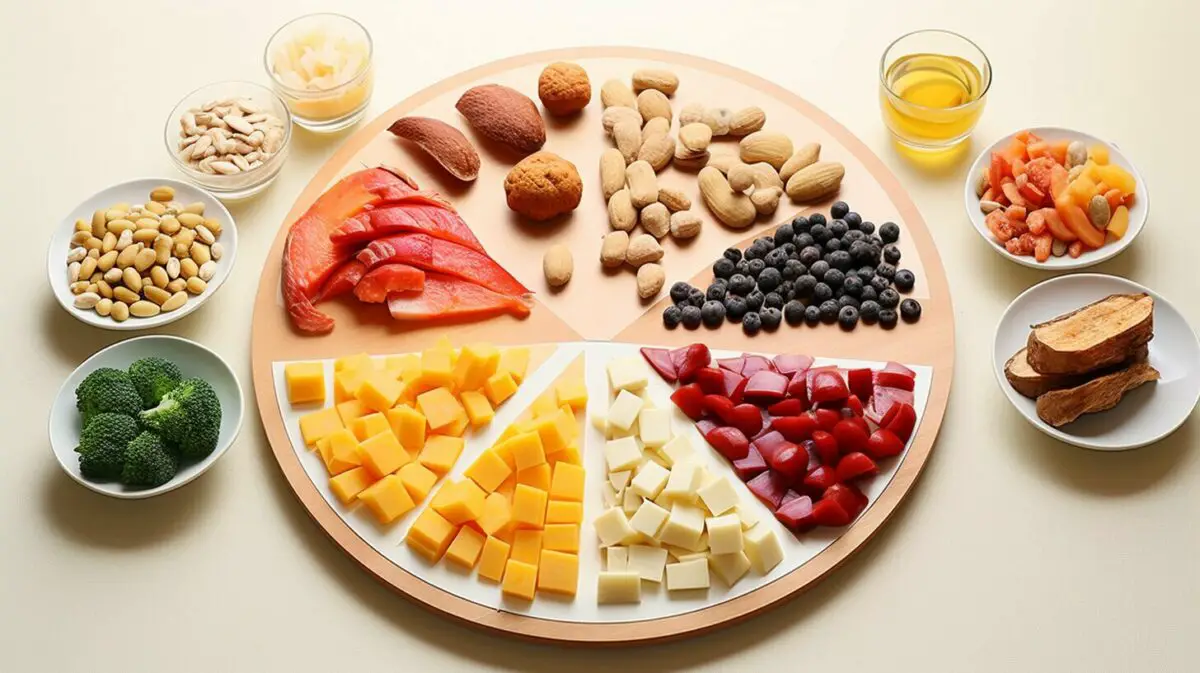
Converting grams to calories is not exclusive to carbohydrates. It’s a valuable skill for understanding the energy value of your food choices across all macronutrients. In addition to carbs, a gram of fat contains 9 calories, making it the most energy-dense macronutrient. Fats are important for various bodily functions, including maintaining cell membranes and providing fat-soluble vitamins. Protein, on the other hand, also contains approximately 4 calories per gram. It serves as a major functional and structural component of animal cells.
| Macronutrient | Calories per Gram |
|---|---|
| Carbohydrates | 4 calories per gram |
| Fat | 9 calories per gram |
| Protein | 4 calories per gram |
To gain a better understanding of how each macronutrient contributes to your overall calorie count, you can use this information to calculate the calories from each gram of fat, carbohydrate, and protein in your diet. This knowledge can help you make informed decisions about portion sizes and macronutrient distribution to support your specific goals and dietary preferences.
Carbohydrates in Different Foods
Carbohydrates are present in a wide range of foods, and understanding the carb content in different food sources is essential for managing your diet effectively. Whether you are counting carbs, following a specific eating plan, or monitoring your blood sugar levels, being aware of the carbohydrate content in the foods you consume can help you make informed choices and maintain a balanced diet.
Here is a list of common food sources and their approximate carbohydrate content per 100 grams:
| Food | Carbohydrate Content |
|---|---|
| White rice | 28 grams |
| Whole wheat bread | 45 grams |
| Quinoa | 21 grams |
| Apples | 14 grams |
| Oranges | 12 grams |
| Broccoli | 7 grams |
It’s important to note that carbohydrate content can vary depending on factors such as cooking methods and ripeness of fruits. Checking food labels and using online resources can provide more accurate information about the carbohydrate content of specific foods.
By incorporating a variety of carbohydrate-rich foods into your diet, such as whole grains, fruits, and vegetables, you can ensure a well-rounded intake of essential nutrients while managing your carbohydrate consumption. Remember to consult with a healthcare professional or registered dietitian for personalized dietary advice.
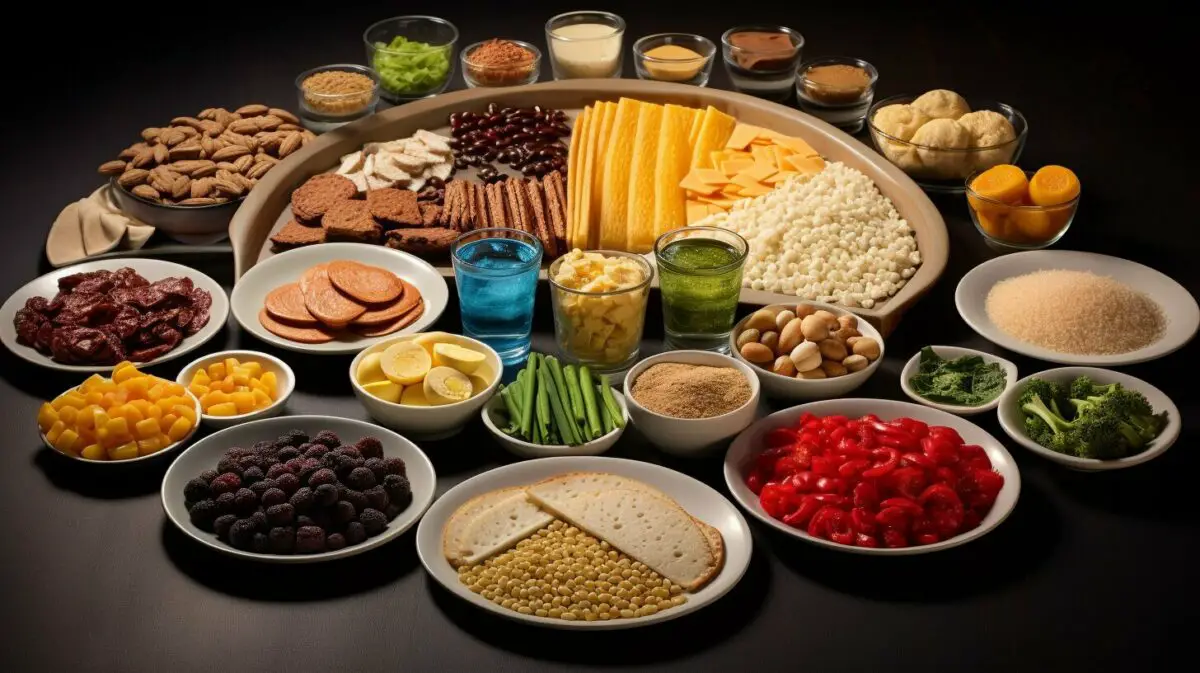
Converting grams to calories is a useful method for understanding the energy content of various macronutrients, including carbohydrates. In general, a gram of carbohydrate contains approximately 4 calories, while a gram of fat contains 9 calories, making it the most energy-dense macronutrient. Protein, on the other hand, also contains approximately 4 calories per gram.
When it comes to alcohol, the calculation is a bit different. To determine the calorie count of alcohol, you can use the following formula: alcohol [g] = volume [mL] × alcohol by volume [%] × 0.78924 [g/mL]. After obtaining the alcohol content in grams, you can then multiply it by 7 (the number of calories per gram of alcohol) to get the total calories.
It’s important to note that a calorie (cal) and kilocalorie (kcal) are not the same, although they are often used interchangeably in nutrition. One kilocalorie is equal to 1000 calories. So, when you see kcal on a food label, it actually represents kilocalories.
Facts at a Glance:
| Macronutrient | Calories per Gram |
|---|---|
| Carbohydrates | 4 |
| Fat | 9 |
| Protein | 4 |
| Alcohol | 7 (approx.) |
For a practical example, let’s say you have a food item that contains 30 grams of carbohydrates. By multiplying the grams of carbs by the calorie content per gram (4), you can calculate that this food item provides 120 calories from carbohydrates.
Understanding how to convert grams to calories for different macronutrients can be a helpful tool in managing your overall calorie intake and making informed dietary choices. By utilizing this knowledge, you can better understand the energy value of the foods you consume and maintain a balanced diet.

The terms “calorie” and “kilocalorie” are often used interchangeably in nutrition, but it’s important to understand the difference when discussing the calorie count of carbohydrates. In simple terms, a calorie refers to the amount of energy required to raise the temperature of one gram of water by one degree Celsius. On the other hand, a kilocalorie, often abbreviated as kcal, is equal to 1000 calories or the amount of energy required to raise the temperature of one kilogram of water by one degree Celsius.
When it comes to nutrition and food labels, the energy content of foods is usually expressed in kilocalories rather than calories. For example, if you see a food label that states it contains 200 calories per serving, it actually means 200 kilocalories. This can sometimes lead to confusion, as the terms calorie and kilocalorie are used interchangeably in everyday language.
To provide some perspective, a gram of carbohydrate contains approximately 4 calories, while a gram of fat contains 9 calories, making it the most energy-dense macronutrient. Fats are important for various bodily functions, including maintaining cell membranes and providing fat-soluble vitamins. Protein, like carbohydrates, also contains approximately 4 calories per gram. Protein serves as a major functional and structural component of animal cells.
| Macronutrient | Calories per Gram |
|---|---|
| Carbohydrate | 4 |
| Fat | 9 |
| Protein | 4 |
It’s important to note that a calorie and kilocalorie are not the same, but they are often used interchangeably in nutrition. Understanding this distinction can help you accurately interpret and calculate the caloric content of carbohydrates and other macronutrients in your diet.
Carbohydrates and Dietary Guidelines
Carbohydrates are an important component of dietary guidelines, and understanding their role can help individuals maintain calorie control and make informed nutritional choices. The American dietary guidelines recommend that carbohydrates make up 45-65% of our daily calorie intake. However, it’s important to consider the quality of carbohydrates consumed. A diet rich in whole grains, fruits, vegetables, and legumes provides fiber, vitamins, and minerals, while added sugars and refined grains should be limited.
Reading nutrition labels can provide valuable information about the carbohydrate content in food products. The nutrition facts panel on packaged foods displays the total carbohydrates and breaks them down into dietary fiber, sugars, and added sugars. This information can help individuals make conscious decisions about their carbohydrate intake and understand the sources of carbohydrates in their diet.
| Food Item | Total Carbohydrates (g) | Fiber (g) | Sugars (g) |
|---|---|---|---|
| Apple | 25 | 4 | 19 |
| Whole Wheat Bread (2 slices) | 24 | 4 | 2 |
| Yogurt (plain, 1 cup) | 17 | 0 | 17 |
Focusing on nutrient-dense carbohydrates and incorporating them into balanced meals can help promote overall health and maintain calorie control. Including a variety of fruits, vegetables, whole grains, and legumes in your diet can provide essential nutrients and contribute to a well-rounded eating plan. It’s important to consult with a healthcare professional or registered dietitian for personalized guidance on carbohydrate intake based on individual health goals and medical conditions.
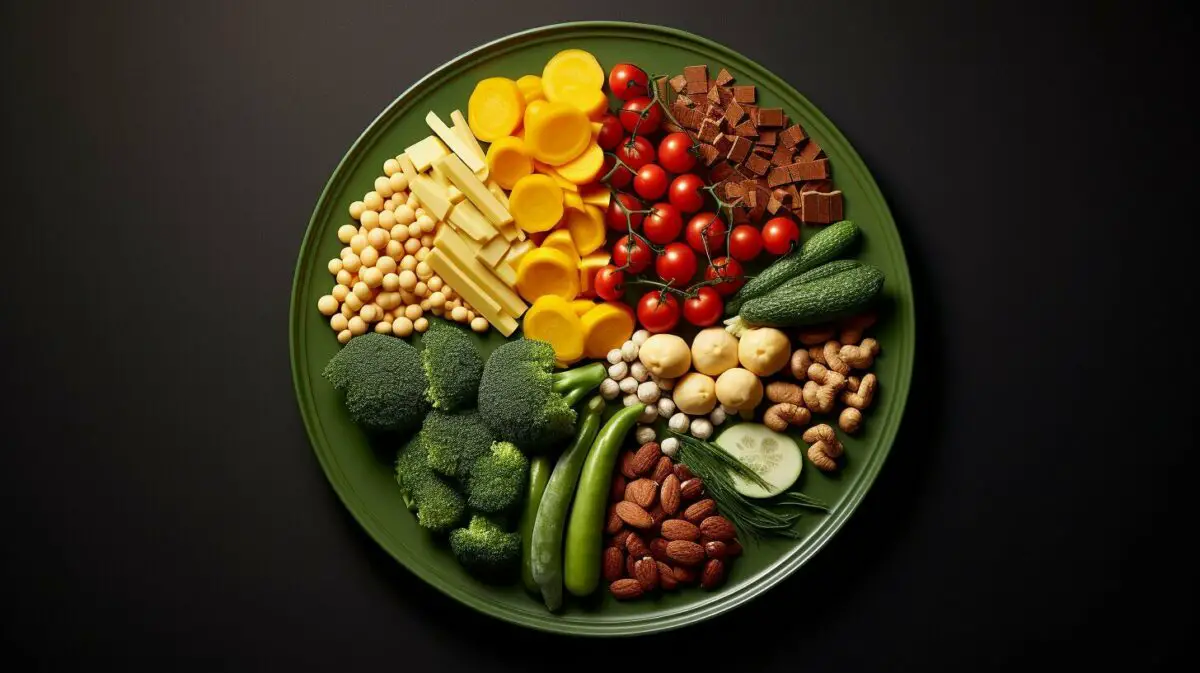
- Carbohydrates play a significant role in dietary guidelines, making up 45-65% of daily calorie intake.
- Reading nutrition labels can help individuals understand the carbohydrate content and sources in their food choices.
- Focusing on nutrient-dense carbohydrates, such as fruits, vegetables, whole grains, and legumes, promotes overall health and calorie control.
- Consulting with a healthcare professional or registered dietitian can provide personalized guidance on carbohydrate intake.
The Role of Fats and Proteins in Comparison to Carbs
In addition to carbohydrates, fats and proteins also provide calories and play important roles in our overall nutrition. While carbohydrates are the primary source of energy, fats and proteins contribute significantly to our diet and have unique functions in the body.
Fats: A gram of fat contains 9 calories, making it the most energy-dense macronutrient. Despite their often-negative reputation, fats are essential for various bodily functions. They help maintain cell membranes, insulate our organs, and provide a concentrated source of energy. Additionally, fats are involved in the absorption of fat-soluble vitamins A, D, E, and K. It is important to choose healthy fats, such as monounsaturated and polyunsaturated fats found in avocados, nuts, and fatty fish, while limiting intake of saturated and trans fats.
Proteins: Like carbohydrates, proteins provide approximately 4 calories per gram. However, proteins serve as major functional and structural components of animal cells. They play a crucial role in building and repairing tissues, producing enzymes and hormones, and supporting optimal immune function. Good sources of protein include lean meats, poultry, fish, eggs, dairy products, legumes, and soy products.
To better understand the caloric value of different macronutrients, let’s consider a practical example. Suppose you have a food item that contains 10 grams of carbohydrates, 5 grams of fat, and 6 grams of protein. By multiplying the grams of each macronutrient by their respective calorie content per gram, we can calculate the total calories from each component:
| Macronutrient | Grams | Calories per gram | Total Calories |
|---|---|---|---|
| Carbohydrates | 10 | 4 | 40 |
| Fat | 5 | 9 | 45 |
| Protein | 6 | 4 | 24 |
In this example, the food item would provide a total of 40 calories from carbohydrates, 45 calories from fat, and 24 calories from protein, resulting in a combined total of 109 calories.
Understanding the caloric content of fats and proteins, in addition to carbohydrates, can help us make informed decisions about our dietary intake and maintain a balanced and nutritious diet.
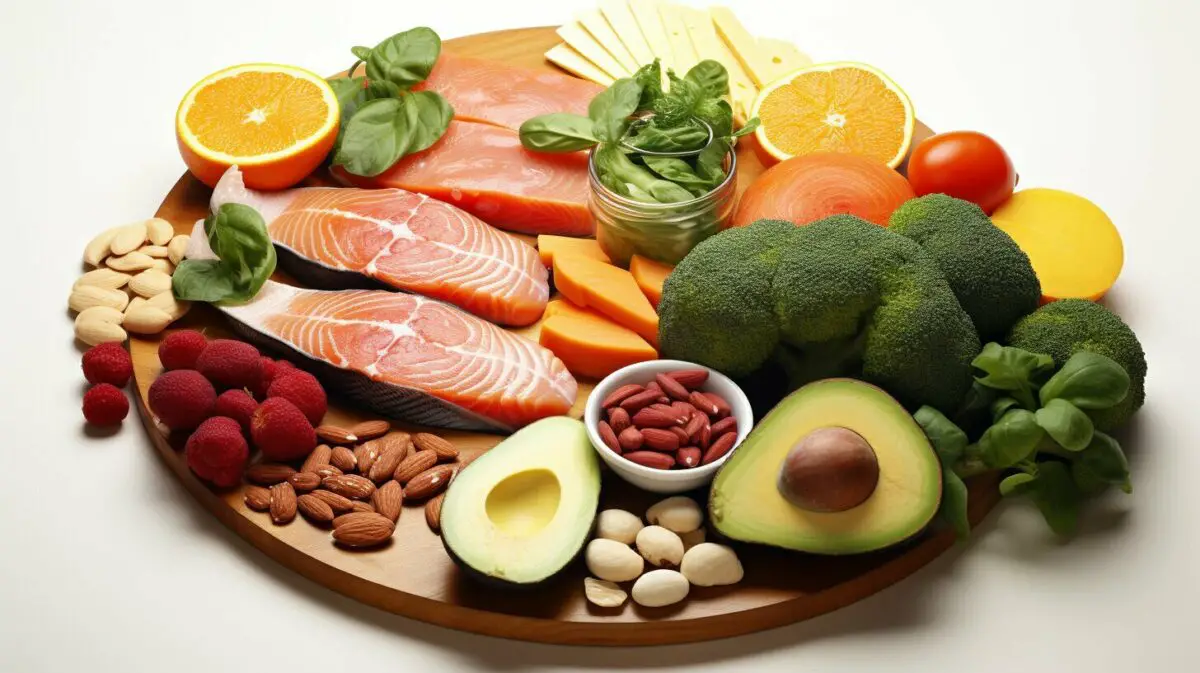
In conclusion, being aware of the caloric content of carbohydrates and incorporating them in moderation is key to maintaining a healthy and well-rounded diet. Carbohydrates, with approximately 4 calories per gram, are the main source of energy in the human diet. They can be found in sugars, starches, and fiber, and understanding their energy value is crucial for fueling our bodies.
It’s important to note that fats, with 9 calories per gram, are the most energy-dense macronutrient. While fats have important functions in our bodies, such as maintaining cell membranes and providing fat-soluble vitamins, it’s essential to consume them in moderation. Protein, like carbohydrates, also contains approximately 4 calories per gram and serves as a vital component of our cells.
When it comes to calculating calories from alcohol, you can use the formula: alcohol [g] = volume [mL] × alcohol by volume [%] × 0.78924 [g/mL], and then multiply the result by 7 (the number of calories per gram of alcohol). It’s worth noting that a calorie (cal) and kilocalorie (kcal) are often used interchangeably in nutrition, although they are not exactly the same. Understanding the difference will help you accurately interpret nutritional information.
In summary, by understanding the caloric content of carbohydrates and other macronutrients, you can make informed choices about your dietary intake. Having a balanced diet that includes appropriate amounts of carbohydrates, fats, proteins, and alcohol can contribute to your overall health and well-being. Remember to consult with a healthcare professional or registered dietitian for personalized recommendations based on your specific needs and goals.
FAQ
Q: How many calories are in a gram of carbohydrates?
A: A gram of carbohydrate contains approximately 4 calories.
Q: What are carbohydrates and why are they important?
A: Carbohydrates are the main source of energy in the human diet. They can be found in sugars, starches, and fiber, and play a crucial role in providing fuel for our bodies.
Q: How many calories are in a gram of fat?
A: A gram of fat contains 9 calories, making it the most energy-dense macronutrient.
Q: How many calories are in a gram of protein?
A: A gram of protein also contains approximately 4 calories.
Q: How do you calculate calories from alcohol?
A: To calculate calories from alcohol, you can use the formula: alcohol [g] = volume [mL] × alcohol by volume [%] × 0.78924 [g/mL], and then multiply the result by 7 (the number of calories per gram of alcohol).
Q: What is the difference between a calorie and a kilocalorie?
A: A calorie (cal) and a kilocalorie (kcal) are not the same, but they are often used interchangeably in nutrition.
Q: Can you provide an example of converting grams to calories for different macronutrients?
A: Sure! Let’s say you have 50 grams of carbohydrates, 20 grams of fat, and 30 grams of protein. To convert these grams to calories, you would multiply each macronutrient by its respective calorie per gram value (4 for carbohydrates, 9 for fat, and 4 for protein). So, 50 grams of carbohydrates would be 200 calories, 20 grams of fat would be 180 calories, and 30 grams of protein would be 120 calories.
Related Recipes:
 How Many Calories in a Gram of Protein? (Perfect Measurement Conversion Guide)
How Many Calories in a Gram of Protein? (Perfect Measurement Conversion Guide)
 How Many Calories in a Gram of Fat? (Perfect Measurement Conversion Guide)
How Many Calories in a Gram of Fat? (Perfect Measurement Conversion Guide)
 How Many Grams Are in an Ounce? (Perfect Measurement Conversion Guide)
How Many Grams Are in an Ounce? (Perfect Measurement Conversion Guide)
 How Many Grams Are in a Kilogram? (Perfect Measurement Conversion Guide)
How Many Grams Are in a Kilogram? (Perfect Measurement Conversion Guide)
 How Many Grams Are in a Pound? (Measurement Conversion Guide)
How Many Grams Are in a Pound? (Measurement Conversion Guide)
 How Many Milligrams Are in a Gram? (Perfect Measurement Conversion Guide)
How Many Milligrams Are in a Gram? (Perfect Measurement Conversion Guide)
 How Many Grams in a Teaspoon? (Perfect Measurement Conversion Guide)
How Many Grams in a Teaspoon? (Perfect Measurement Conversion Guide)
 How Many Cups Are in a Liter: Unlocking the Mystery
How Many Cups Are in a Liter: Unlocking the Mystery


